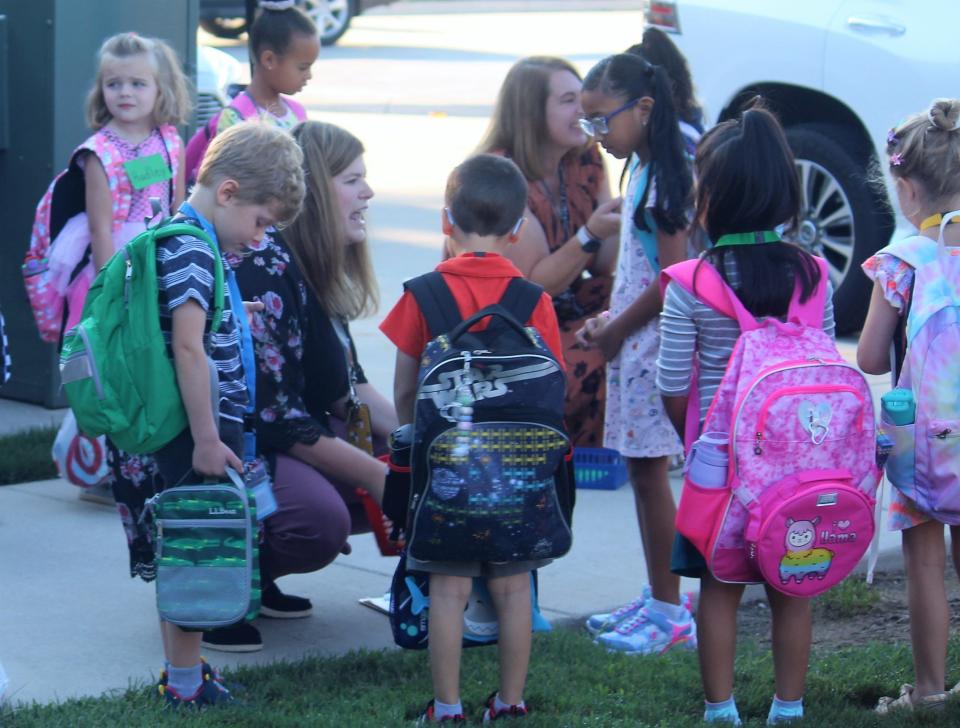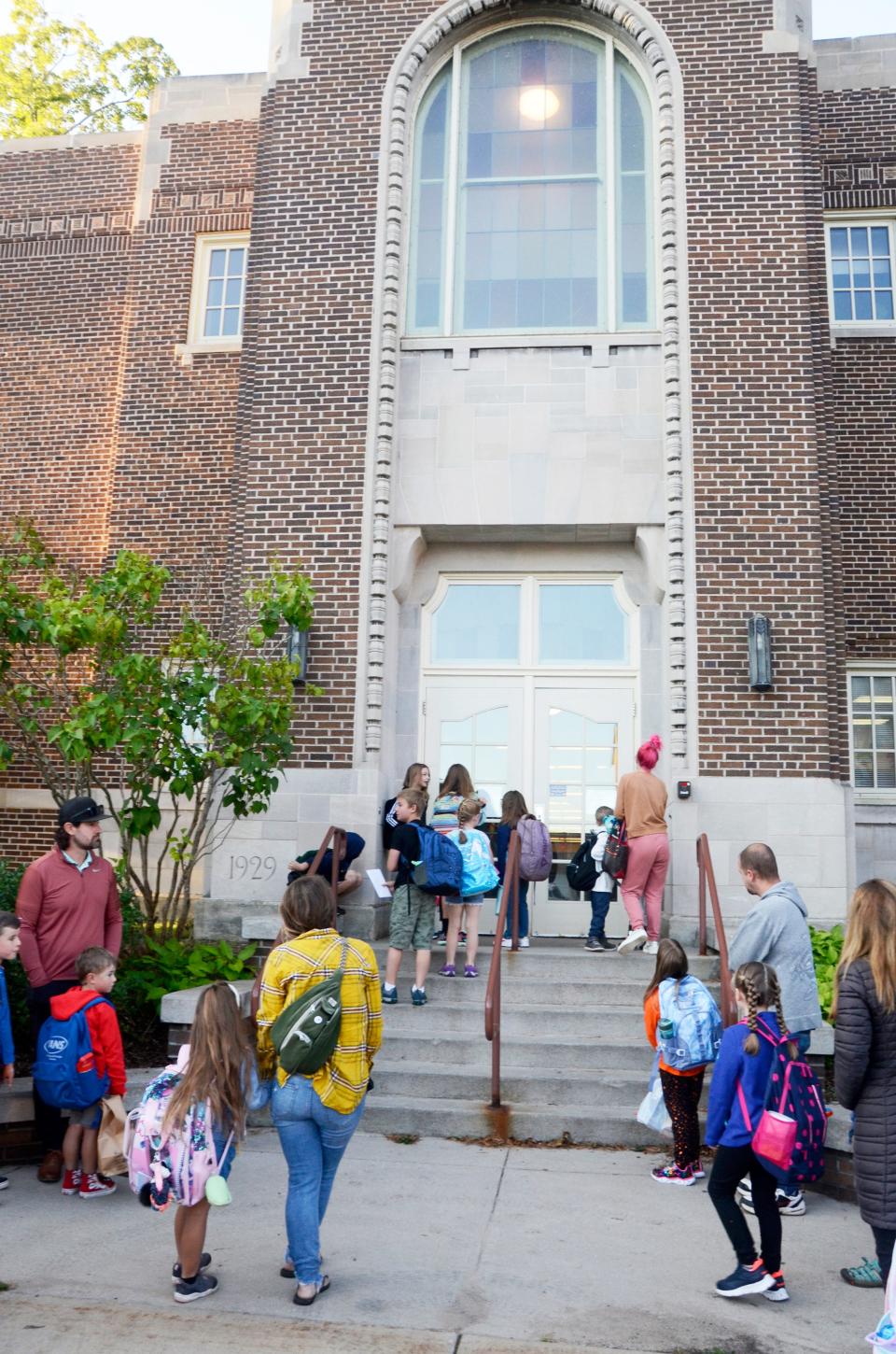Today is Count Day. Here's what that means for Michigan schools.
The first Wednesday of October is always a key date on the school calendar — and it has nothing to do with instruction.
Count Day — which is actually more than a day — is held twice each school year, beginning in October. It’s a day when attendance at school is about more than lessons: it's about funding.

How the count works
Attendance on Count Day is used to determine official enrollments for districts and, in turn, their state funding allocations. Each district is given a per pupil allowance, set at $9,150 per student for the 2022-23 school year.
Enrollments for state aid are determined using 90 percent of the October count and 10 percent of the second count, taken on the second Wednesday in February.
“Bottom line, this is how we get our state funding and build our budgets,” Gaylord Community Schools Superintendent Jim Cracraft wrote in an email.
Schools that participate in Count Day get per student allowances. But some districts — like Harbor Springs in the northern Lower Peninsula — qualify as out-of-formula, meaning their funding is based on their property values, rather than the number of students at the schools.
A financial driver
The majority of funding for public school districts in Michigan comes from the state. That's been the case since Proposal A passed in 1994.
Prior to Proposal A, about 69 percent of school funding came from local taxes and 31 percent came from the state. Since the proposal was adopted, 80 percent of school funding comes from the state.
Districts are required to levy 18 mills on non-homestead properties, referred to as operating millages, and the state provides the remainder needed to meet a districts' per pupil allowance.
This change made Count Day an important day for schools. The higher enrollment is, the more funding a district receives.

“Enrollment is probably the number one driving factor for a school district’s general fund,” Jeff Malloch, associate superintendent of business services at West Ottawa in West Michigan, told The Holland Sentinel last Count Day.
Count Day also throws a wrinkle into budgeting processes for districts. Schools must adopt an initial budget by the end of June, but won’t know enrollment figures until October’s count. As a result, districts have to project enrollments as a placeholder until official numbers come in.
Superintendent Stephen Seelye in Pellston, also located in the northern Lower Peninsula, said planning a budget around Count Day can be difficult. Count Day determines school funding, and when the state and school fiscal years don’t line up, planning a budget can be guesswork.
“That's a big deal,” he said. “When you're trying to make decisions on staffing, construction projects, purchasing new buses — you make your best guess, but you don't really know how many students are in the seats until this day every year."
With state aid now at more than $9,000 per pupil, even slight changes in enrollment can provide a significant boost, or hit, to a district’s finances.
“If you’re down 10 kids, there’s about $90,000 in general fund revenue the district is missing out on,” Malloch said. “If you’re off 10 kids from what you budgeted, that can have a significant impact on the operation of a district.”
Larger districts can absorb declines more easily, as they’re more likely to have year-over-year staff openings that can go unfilled. But at smaller schools, each student is a higher percentage of the overall revenue, and losing a handful of students could mean losing funding for a teaching position.
“If you have a 1 to 2 percent decline in pupil enrollment for multiple years in a row, that has to start the conversation of the district looking structurally at what needs to change in their staffing plan in their buildings,” Malloch said.
What if someone is absent on Count Day?
Absent students can still be counted after Wednesday, so long as they show up within a set number of days.
Students with unexcused absences can be counted if they show up within 10 school days after Count Day, while students with excused absences can if they show up within 30 calendar days. Suspended students can be counted if they show up within 45 calendar days.
Local school boards determine the distinctions between excused and unexcused absences.

Katy Xenakis-Makowski, superintendent of Johannesburg-Lewiston Area Schools (located east of Gaylord), said while students can be counted after Count Day, it’s more work to maintain paperwork to ensure the students are counted.
“The recording of the attendance carries forward and pupil accounting staff must track all students' attendance for those days,” Xenakis-Makowski wrote via email. “So, it's a lot more work in offices to maintain the paperwork, but students who are legitimately absent can still be counted.”
To help get as many students through the doors as possible, elementary students’ picture day is held on Count Day in Johannesburg-Lewiston Area Schools.
Seelye in Pellston said the day doesn’t get much special treatment in his district.
“Every day is Count Day in Pellston,” he said. “We just encourage our kids to be here every day and don't do anything different.”
— Contact reporter Karly Graham at kgraham@petoskeynews.com. Contact reporter Mitchell Boatman at mboatman@hollandsentinel.com. Gaylord reporter Paul Welitzkin contributed to this article.
This article originally appeared on The Petoskey News-Review: Today is Count Day in Michigan. Here's what that means for schools.

